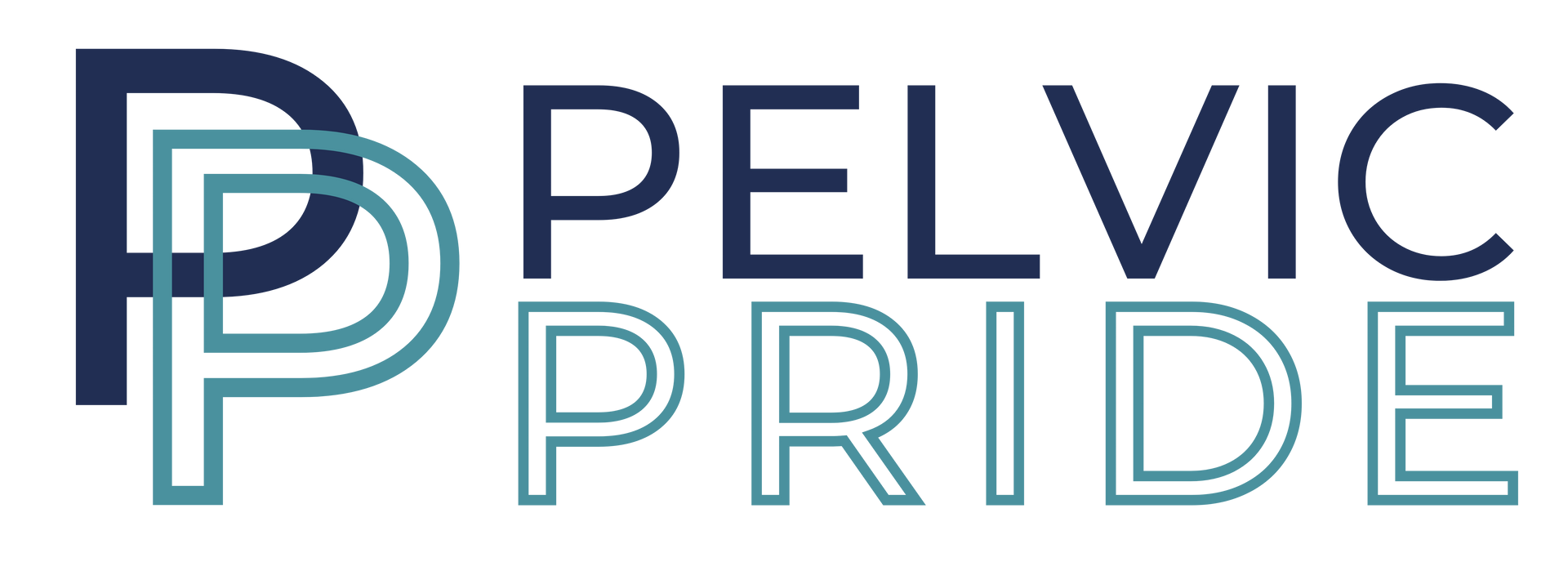How Much Should I Be Peeing?
You may be wondering 'How much should I be peeing?' after you take what feels like your millionth bathroom trip of the day.
When we ask our patients how much they are peeing, our patients provide a range of answers from every 30 minutes to once every 12 hours. Yikes! I can imagine if you polled your friends you’d get a similar response. This is because some people are peeing way too much, and others are holding it way too long. So how do you know what is normal… or the ‘right’ answer? First, let’s figure out why we are hearing such a wide range of answers and then we will get to the actual answer to the question.
To get us started, let's chat about what it looks like when we pee.
Our bladder has the capacity to hold between 400-600 mL of fluid (or about 1.5 to 2.5 cups) and when we pee typically 300-500 mL (or 1.25 to 2 cups) comes out. As the bladder starts to fill the detrusor muscle (pictured below) will stretch and send a signal to the brain resulting in an urge to pee. Typically, the first sensation to pee occurs when the bladder is about one-third to halfway full, however that feeling can be quieted for a little longer to allow the bladder to continue filling. During this time, the pelvic floor muscles, which provide bottom-up support to the bladder, are subconsciously active to help keep the urethra closed so the bladder can keep storing urine. When the bladder is truly full, there is a second, likely stronger feeling like you need to urinate that signals it’s time to head to the bathroom. In a perfect world, we wait for that strong need to pee rather than going too soon when we get that first small signal.

So now let’s take a look at why you may be peeing too much.
‘Just in Case’ Voiding
These are the patients that tell us they are peeing every 30 minutes to one hour (and sometimes even more frequently). They are constantly looking for a bathroom and often admit to going ‘just in case’. The issue with going too frequently is that we train our bladder and our brain that we have less capacity to hold urine.
By going to the bathroom ‘just in case’ we are not letting our bladder fill up to that 400-600mL range. As a result, the bladder detrusor muscle learns to send the signal for the need to pee earlier which results in peeing more frequently.
How to treat 'Just in Case' Voiding:
To help decrease peeing too much, we recommend limiting going to the bathroom ‘just in case’ and trying to let your bladder fill more before going to the bathroom. However, if this doesn’t seem to be working, seeking out a pelvic health therapist for individualized help is the next best step! At
Pelvic Pride, we will work with you to identify strategies to gain control of bladder, help decrease the frequency of voids, and support overall bladder health so you aren't peeing too much.
Bladder Triggers
Have you ever experienced a strong, sudden urge to urinate when hearing the sound of flowing water? Or maybe when you are pulling into your driveway or putting the key in the front door? We call this the ‘key in the door’ phenomenon where the brain may associate specific environmental triggers with the need to urinate. This strong, sudden urge to go can feel very intense, stressful, and is likely associated with leaking pee as a result of trying to get to the bathroom on time.
How to treat bladder triggers: We are here to help you identify any environmental bladder triggers you may have, find strategies to help reduce the bladder stress response that can lead to leaks, and help you take control of your bladder!
Bladder Irritants
If you have seen a medical provider (like your primary care provider or a urologist) about urinary frequency and urgency you were likely given a list of foods and drinks to avoid. They are items that are known to irritate your bladder lining and create a strong urge to void. The most common bladder irritants are:
- Caffeine
- Carbonated beverages
- Alcohol
- Citrus foods and drinks
- Tomato-based foods
- Spicy foods
The issue with cutting out these foods is that this is not a fool-proof way to get rid of urinary urgency/frequency and oftentimes these symptoms are more complex than just cutting something out of our diet.
Most patients who suffer with urinary urgency and frequency, or even urinary leakage, will start to limit their water intake under the guise that less water in the bladder means less urine to leak/pee out. Unfortunately,
limiting water will not be helpful
and may actually make the symptoms worse. Urine is acidic in nature, and if we drink less water, the urine can become more acidic which will irritate the bladder lining. When irritated, the bladder does not like to store urine as long which can lead to peeing more often to try to get rid of it, further adding to urgency and frequency symptoms.
How to manage bladder irritants: We recommend staying hydrated to dilute the irritants you are consuming so that you can continue to enjoy these things and your bladder will stay happy too! Keep in mind,
hydration is a balance. Just because you may drink a few cups of coffee per day, does not mean you should add a few bottles of water per day too. Start slow, sip your water (don’t chug), and gradually build up to half your body weight in ounces of plain water per day (so someone who weighs 150# should ideally drink 75 ounces of water).
Finally, let’s chat about those who are not going to the bathroom frequently enough.
We often hear this from our patients who are teachers and nurses, or others in a profession or life phase where they do not have easy access to the bathroom when they need to go. As a result of repetitively holding urine in the bladder for several hours, the bladder can become stretched thus decreasing the efficacy of the detrusor muscle to spasm and signal the need to go pee.
How to make sure you pee enough: Much like those who go too frequently, we can help to reduce this issue and improve your bladder function such as timed voiding and increasing awareness around the bladder’s signal to pee.
So how much should I be peeing?
We recommend urinating every 2-4 hours or about 5-8 times per day, and only 0-1 times at night (those who are over the age of 65, are pregnant, or are taking a diuretic medication will experience increased nighttime voiding).
We know this information can be overwhelming and difficult to sift through. If you feel you need more help addressing your specific needs, we highly recommend
working with us at Pelvic Pride so we can create a plan customized to you! We are here to listen to your symptoms and identify the best treatment techniques and strategies to support you.
Typical treatment techniques to help make sure you are peeing enough include:
- Evaluation and treatment of the pelvic floor musculature (and the muscles around the pelvic floor) as pelvic floor muscle tension is typically associated with symptoms of urinary frequency and urgency
- Research has found that hands-on muscle relaxation treatment effective to improve "urinary symptoms while avoiding medications and more invasive therapies" (1)
- Supporting bladder routines which may include specific fluid recommendations, urge suppression strategies, or bladder emptying techniques
- Nervous system downtraining strategies to improve overall stress levels and stress responses associated with bladder symptoms
1. Adams, S. R. MD, Dessie, S. G. MD, Dodge, L. E. ScD, MPH, Mckinney, J. L. PT, MS, Hacker, M. R. ScD, & Elkadry, E. A. MD. (2015). Pelvic Floor Physical Therapy as Primary Treatment of Pelvic Floor Disorders With Urinary Urgency and Frequency-Predominant Symptoms.Female Pelvic Medicine & Reconstructive Surgery, 21(5), 252–256.
https://doi.org/10.1097/SPV.0000000000000195
Where to find treatment in Maryland
At Pelvic Pride Physical Therapy & Wellness, we specialize in the treatment of ALL pelvic floor conditions, including urinary frequency, so you are in the right place! We are conveniently located in the Federal Hill neighborhood in Baltimore MD. Fill out our contact form & our Patient Care Specialist will reach out to you ASAP!
Next on Your Reading List
- The Five Types of Urinary Leakage
- The 3 Treatment Methods of Pelvic Therapy
- The Ultimate Guide to Pelvic Floor Physical Therapy
Love our content? Let's stay connected!
Subscribe to our newsletter for personalized updates when new blog posts are dropped.






